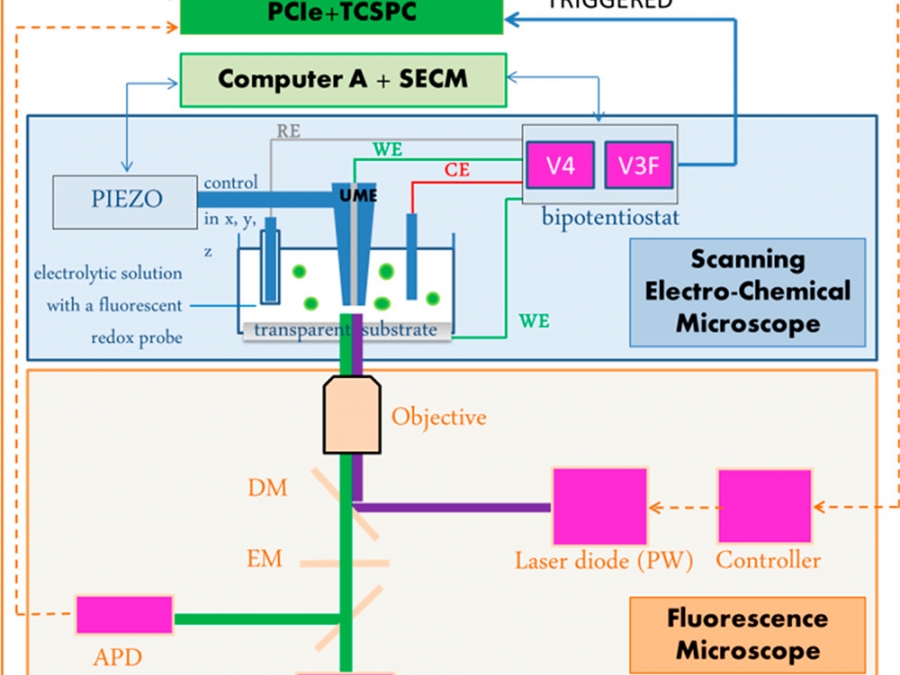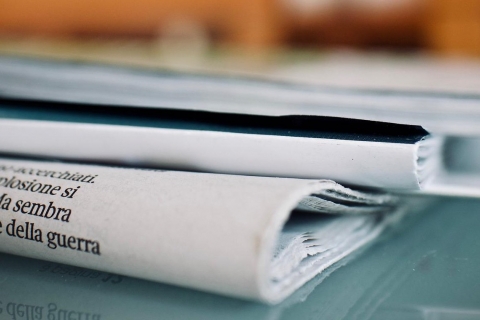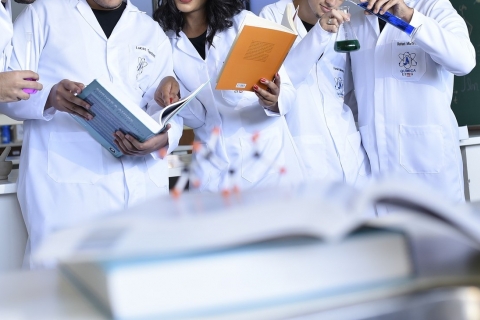Theme F: instrumentation and innovative setups
Correlation of optical and AFM microscopies (A. Brosseau, R. Métivier)
This setup, developed in the laboratory, aims at correlating the morphological characteristics of nano-objects with their photophysical properties, down a few nanometers scale. It is used to study a "self-super-resolution" imaging methodology recently developed in the laboratory (see Amplified Photoswitchable Fluorescent Systems project of theme B). Similarly, it is used to link spectroscopic properties to mechanical ones at the nanoscale in the framework of projects from theme C Mechanically stimulable luminescence and photostimulable mechanical properties.
Coupling of fluorescence and electrochemical microscopies SECM-TIRFM (J.F. Audibert, F. Miomandre)
We have developed a fluorescence microscopy set-up coupled to an electrochemical microscope (SECM), equipped with two illumination modes (TIRF or wide field) and an ultra-microelectrode. This set-up allows the complete study (imaging, spectra and lifetime) of the emission properties under electrochemical control, whether the fluorophore is in solution, in a thin layer or in the form of a single layer on the electrode. This set-up mainly supports the research activities of theme D functionalized and switchable surfaces.
Fluorescent probe - microfluidics - detection (I. Leray, C. Mongin)
We use the microfluidic platform of the d'Alembert Institute to develop new digital microfluidic components for the study of Escherichia coli gene transmission or pollutant detection as well as optodes for monitoring pH in concrete. This axis is linked to the activities of themes A (towards new fluorescent molecules with high added value) and E (photoactive molecules and molecular assemblies for biological and biomedical applications).
Theme F managers










